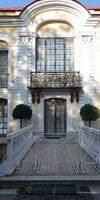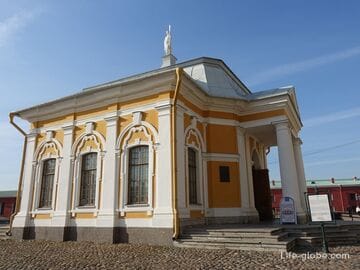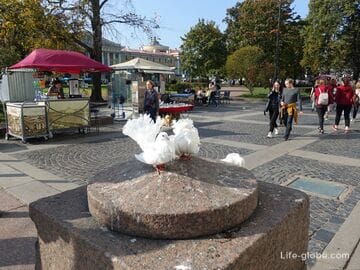The Hermitage Pavilion is one of the pavilions, the so-called small palaces, located in the Lower Park of the Peterhof Palace and Park Ensemble in Peterhof (Saint Petersburg).
The Hermitage in Peterhof (from the French ermitage - "hermit's shelter") is a place for solitude (a small building), which is a park pavilion (small palace).
The fashion for building Hermitages or special pavilions for privacy spread among wealthy Europeans in the 18th century.
In Russia, the first Hermitage was built in the park at the Peterhof Palace, by decree of Peter I, who was inspired by the idea of building this building after his trip to Europe.
It was this one, the Peterhof seaside pavilion, that served as the prototype of all the Russian "Hermitages" built later.

The construction of the Hermitage pavilion in Peterhof began in 1721, designed by the architect I. Braunstein. The construction of the Hermitage was completed after the death of Peter the Great.
The Hermitage is a small two-story pavilion building, which stands on a massive base-a stylobate and is surrounded by a deep, wide moat. The moat was previously filled with water and a drawbridge was thrown over it.
The bridge and the facades of the pavilion look like a single composition, and the lightness and airiness of the facades are given by huge glass windows-doors, as well as stucco decorations and light colors.


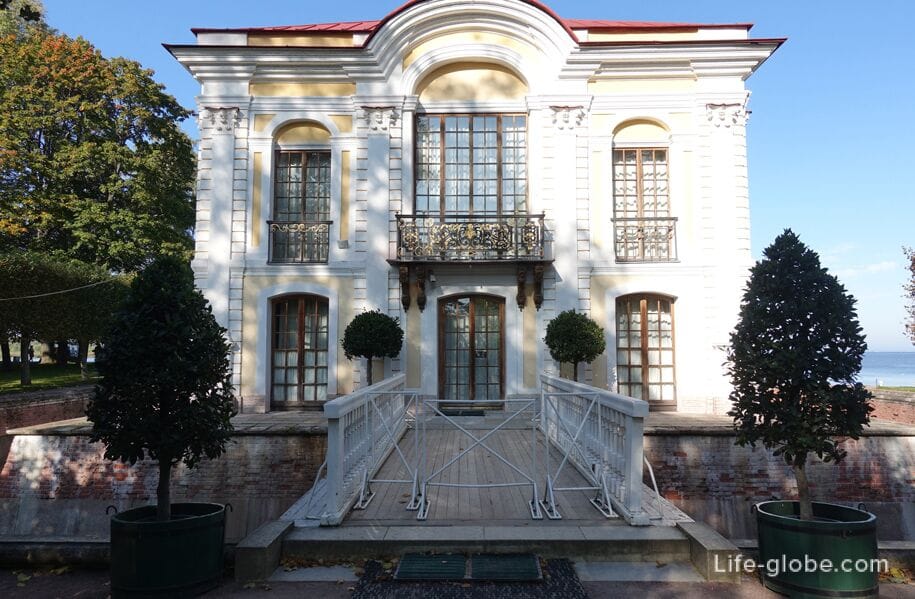
The Hermitage Pavilion was damaged during the occupation during the war. After that, it was restored and in 1952 became the first Peterhof museum to open its doors to visitors.
Today, within the walls of the Hermitage pavilion, there is a museum, the jewel of which is a table with a lifting mechanism - a miracle of technology of the first quarter of the 18th century.
Interior of the Hermitage Pavilion»
Initially, the first floor of the pavilion was completely given to the servants, and the second floor was intended for the owners and their guests.
On the ground floor there were two closets, a kitchen, and a pantry where servants prepared and heated food for the feasts organized in the upper hall of the pavilion.
The layout of the prepared dishes and the setting of the Hermitage table for 14 people took place in the pantry, which occupies a central position on the first floor of the pavilion. After serving in the pantry, through the oval opening between the floors of the pavilion, with the help of a hand pull, the covered central part of the table was lifted to the second floor, where the guests were waiting for the dishes.
This method of serving food served not only to entertain the guests, but also to preserve secrets - so that the servants could not hear what was being said, and see what the owners and their guests were doing.
Today, the main exhibit of the pantry on the first floor is the lifting mechanism.
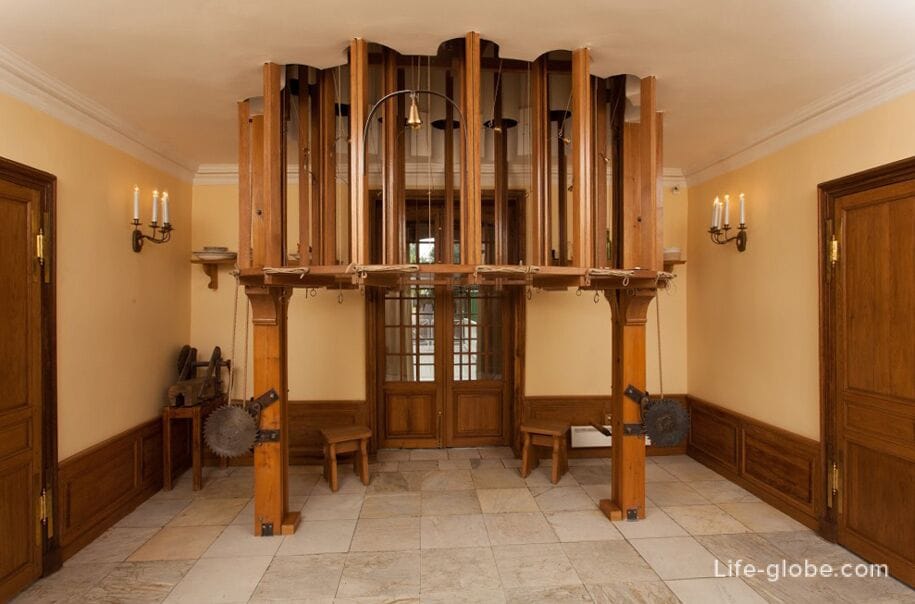
Initially, guests got to the hall on the second floor with the help of a kind of elevator-a lifting chair on cables. In 1797, when during the stay in the Hermitage of the Emperor Paul, one of the cables of the chair broke, the lifting device was destroyed and a staircase was built, which still exists today.
Today, the hall on the second floor of the Hermitage Pavilion looks elegant and at the same time fascinating. This effect is created thanks to the large windows facing on four sides. The windows offer views of the bay with Kronstadt and the Lower Park.
The walls of the hall are almost covered with a carpet of 124 paintings, separated by a thin gilded baguette. The collection of paintings in the hall consists of works of art of the leading art schools of Europe of the 17th and 18th centuries, mainly paintings by masters of the Dutch, Flemish, Italian, German and French schools. Russian Russian painting hall is dedicated to the Russian theme - this is "The Battle of Poltava" by an unknown Russian artist.
A special impression in the upper hall is made by a luxuriously laid table.
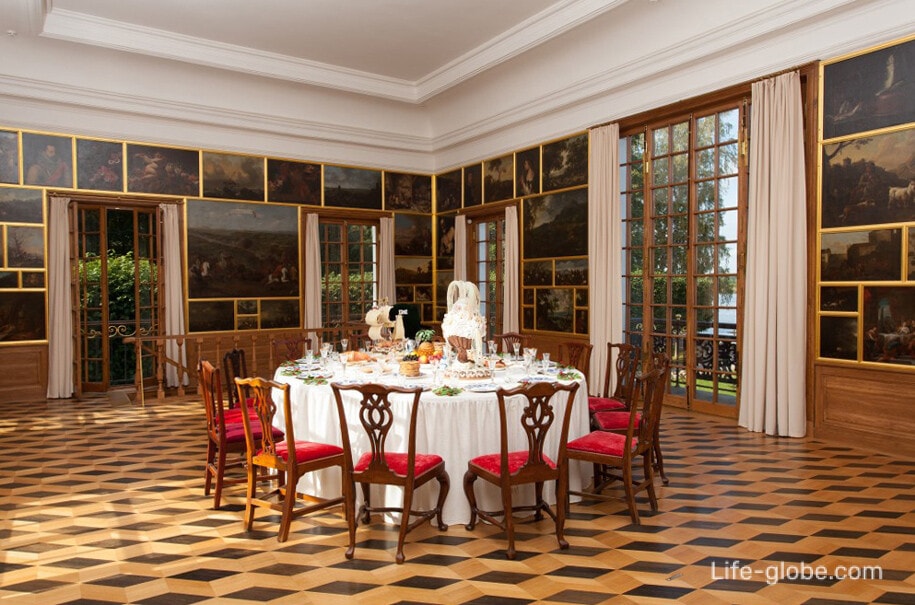
In this pavilion, at one time, Catherine I and her daughter Elizabeth Petrovna liked to arrange evening meals. Catherine II also often visited the Hermitage. During her time in the Hermitage, important state affairs were discussed, meetings and literary salons were organized. So, one evening in the walls of the pavilion, in the presence of the Empress, Denis Ivanovich Fonvizin read his comedy "The Brigadier".
Near the Hermitage Pavilion»
Alleys diverge from the Hermitage Pavilion to different parts of the Lower Park.
Near the bridge of the pavilion are:
- security location;
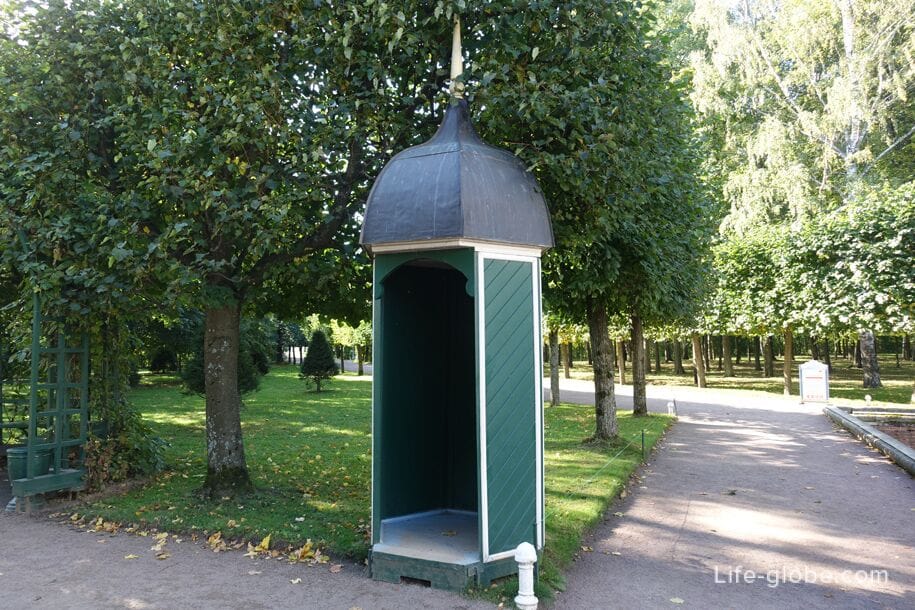
- two wooden trellis gazebos, which were an integral part of the regular parks of Europe in the 18th century and were intended for recreation during walks.
The gazebos in the Lower Park were restored in 2004 according to the plan of P.-A. de Saint-Hilaire (1774).
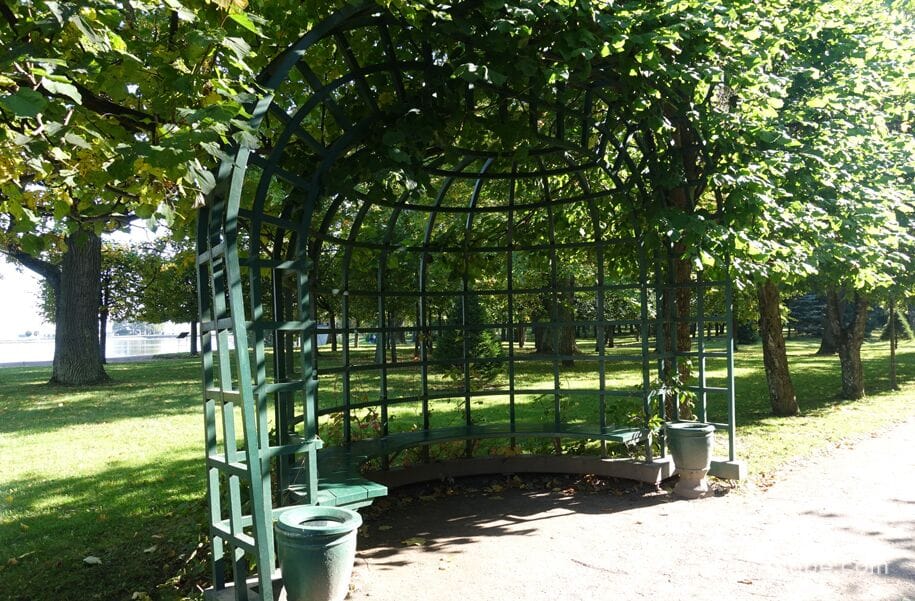
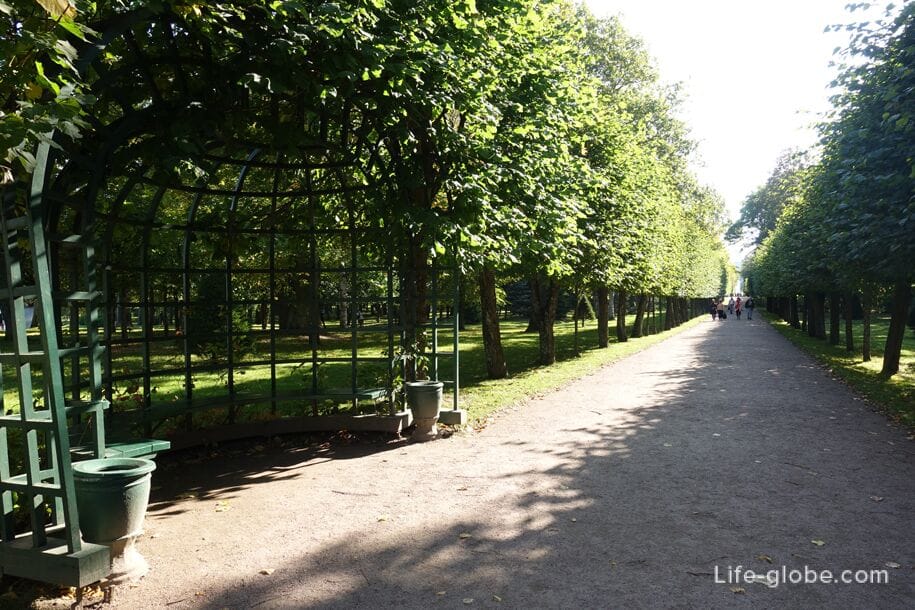
One of the alleys in the park leads from the Hermitage Pavilion to the Hermitage Cascade Fountain (now the Lion Cascade Fountain), which was named after the Hermitage Pavilion located nearby and was built in accordance with the wishes of Peter I, according to whose plan each palace in the Lower Park should have its own cascade. Learn more about the Lion Cascade with photos and videos…
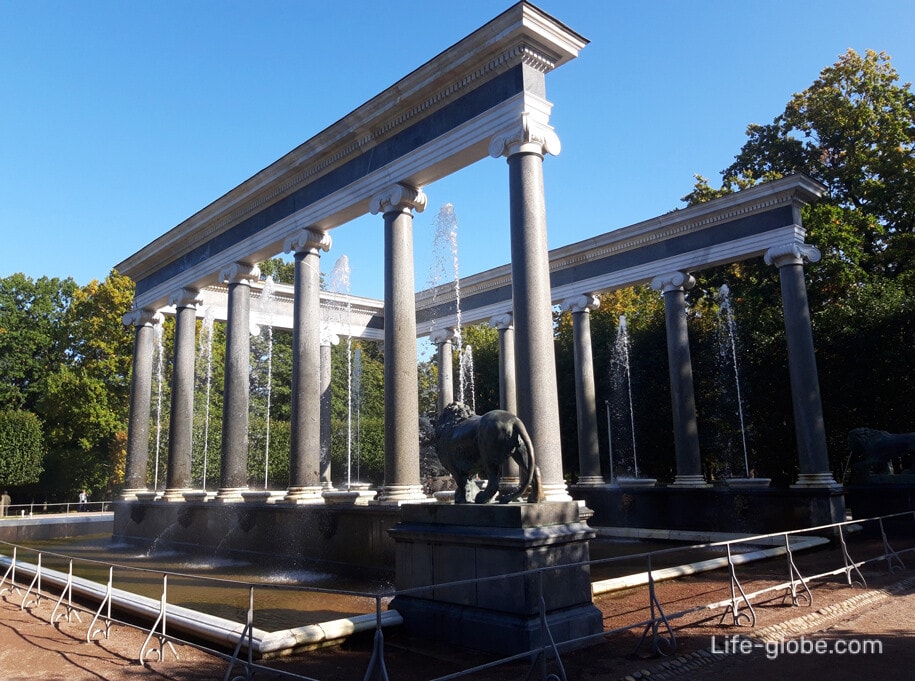
Practical information
The Hermitage Pavilion is located on the shore of the Gulf of Finland in the western part of the Lower Park of the Peterhof Palace and Park Ensemble.
The museum in the pavilion is closed in winter.
In winter, when the fountains of the park are not working, the entrance to the Lower Park is free (free of charge).
In the summer, the fountains are open and the entrance to the Lower Park is paid.
Admission to the park's museums, including the Hermitage Pavilion, is paid separately (in addition).
The opening hours of the park and the Hermitage Pavilion, as well as the terms of the visit and the cost of tickets, are recommended to check immediately before visiting the official website.
Website of the State Museum-Reserve "Peterhof": peterhofmuseum.
You can also visit the State Museum-Reserve "Peterhof" with one of the excursions
All the ways to get to Peterhof from St. Petersburg (the airport and the city center) can be found here →
Near the Palace and Park Ensemble "Peterhof" you can stop
The 4-star Novy Peterhof Hotel features a restaurant, a bar, parking, a tour desk, a spa area with an indoor pool, a gym, a steam bath, a Finnish cedar sauna and an aroma sauna.
The rooms are decorated in a modern style and feature a TV with satellite channels, free Wi-Fi, a safe, bathrobes and slippers, a hairdryer and free toiletries. Some rooms have a seating area.
The room rate can include: breakfast, breakfast + dinner or breakfast + lunch + dinner. Link to the hotel
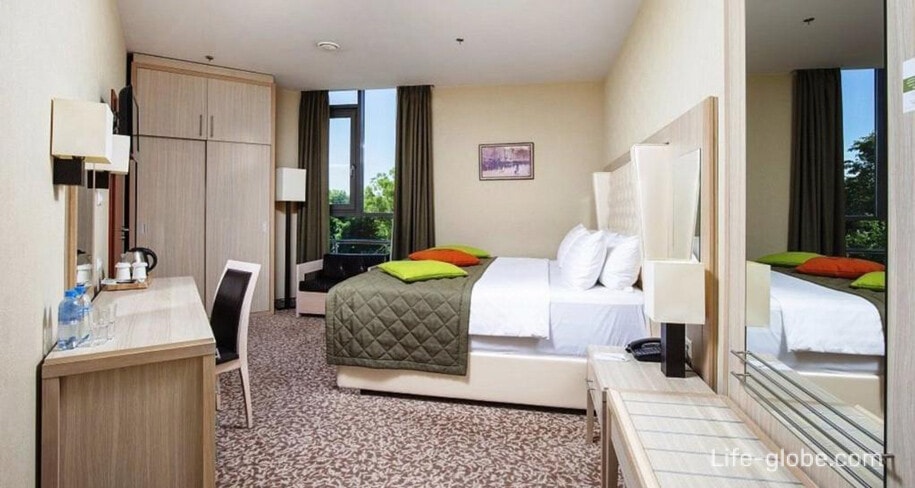
EGO-LOFT Apartment (Holgin Pond) they offer views of the lake and the city.
The apartmentfeatures air conditioning, a balcony, free Wi-Fi, a flat-screen TV, a washing machine, a bedroom, a kitchen with a dishwasher and a microwave, and a bathroom with a hairdryer and free toiletries. Link to the apartment
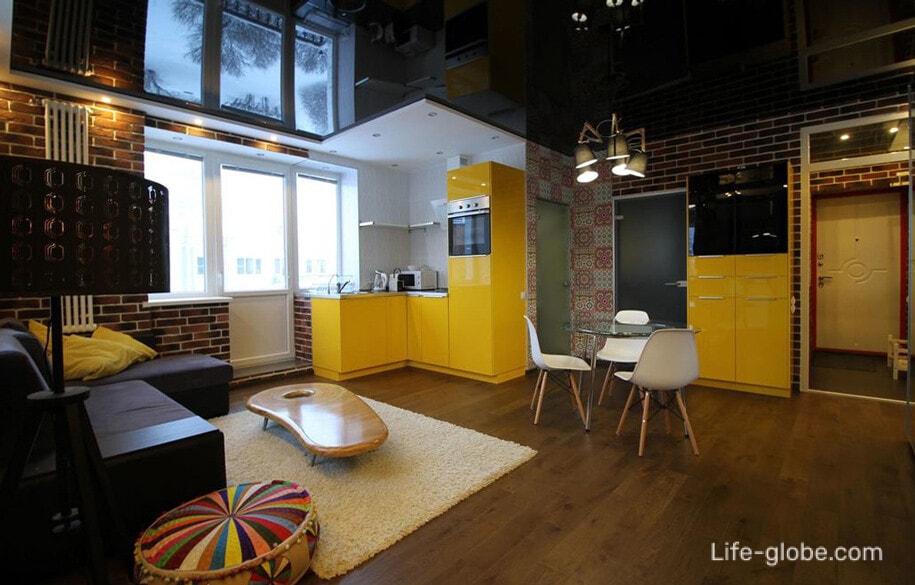
Featuring a balcony with lake views, Severnaya Venezia offers free Wi-Fi, a children's playground, a garden and a shared lounge.
The apartmentfeatures a bedroom, a flat-screen TV with cable channels, an equipped kitchen with a microwave and a refrigerator, a washing machine, and a bathroom with a shower. Link to the apartment
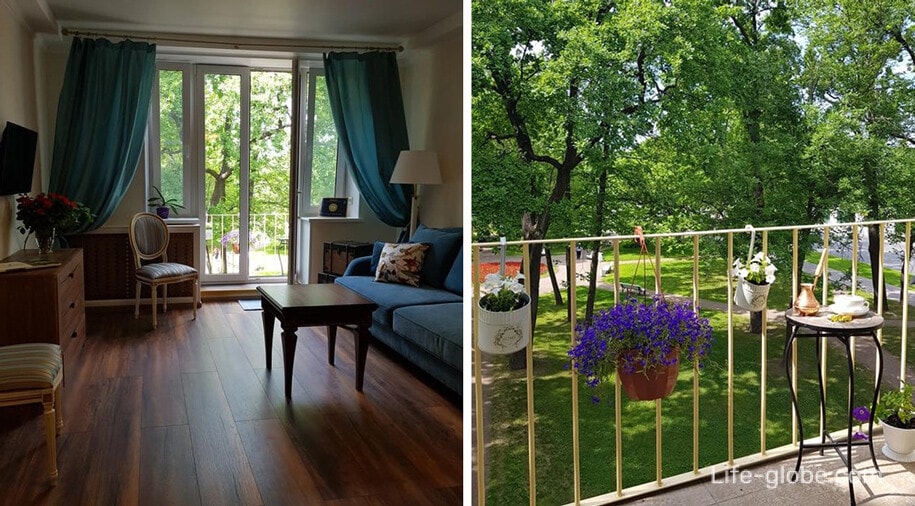
All accommodation facilities in St. Petersburg, including in the city center and in Peterhof, can be viewed and booked here




